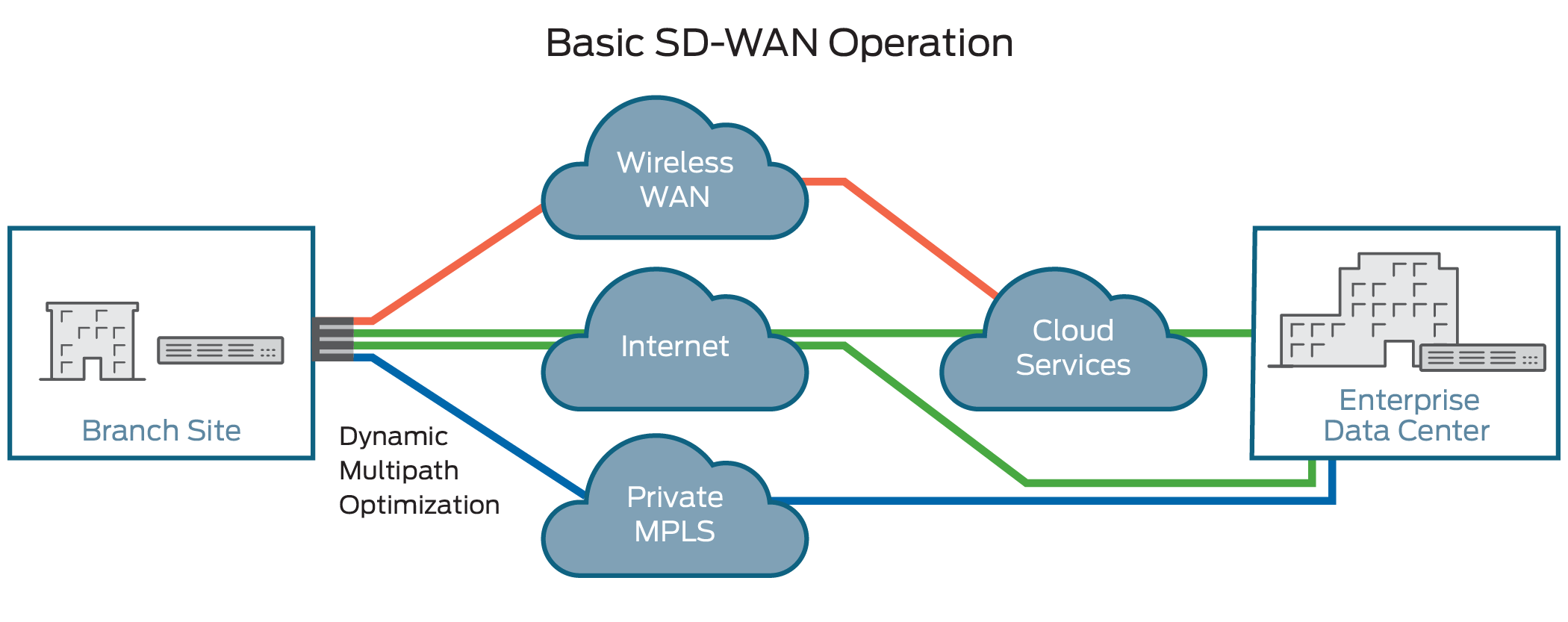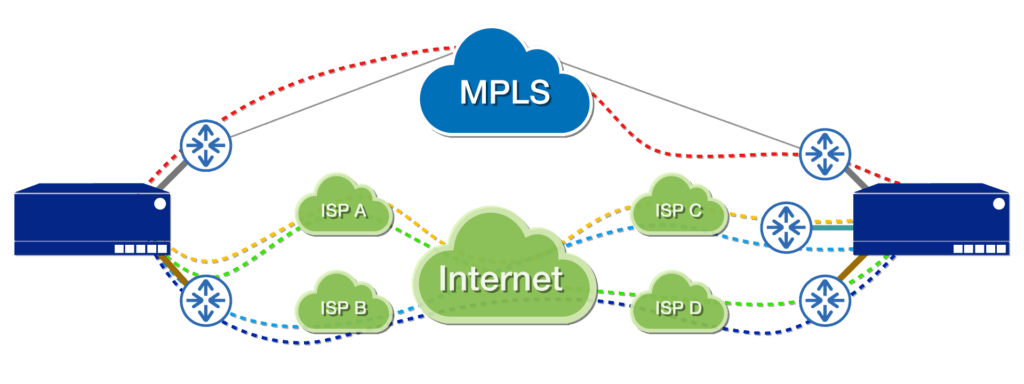SD-WAN is growing continuously. In fact, Gartner predicts to SD-WAN market to reach 1.3 billion by 2020. While early SD-WAN adopters were motivated by its decreased cost and high performance, many are now driven to adopt SD-WAN due to its agility. Popular to contrary belief, SD-WAN can be deployed in many distinct ways, which are selected by enterprises.
What is SD-WAN As a Service
SDWaaS, or SD-WAN As a Service, helps simplify the network by eliminating appliance sprawl with a cloud-scale software. SDWaaS providers are responsible for providing the hardware needed for each site. They also are required to provide a virtual overlay network backbone, to include other features like security and centralized management. This eliminates requiring customers to manage everything themselves and allows customers to leverage value-added services like SLAs.

Organizations that use SD-WAN see many benefits, to include cost savings. WAN costs can be reduced by nearly 90% because of the fact that private WAN connections are replaced with lower cost broadband connections. Cost savings and other benefits apply to SD-WAN in general, but these benefits also apply to SDWaaS.
While some consider carrier-managed SD-WAN to be synonymous to SD-WAN as a service, they are in fact very different. Cloud-hosted SD-WAN is also commonly confused with SDWaaS. Organizations that are looking for the right SD-WAN solution should know how these offerings differ.
The Difference Between SDWaaS and Other SD-WAN Solutions
Some SD-WAN vendors offer a service that uses what is called “service chaining.” Service chaining redirects traffic to security appliances or cloud security services for inspection. However, physical security appliances will still need to be scaled, patched and upgraded. Cloud security services only inspect internet-bound traffic, focusing only on HTTP/HTTPS traffic. This means it is merely bolting on security, offering limited benefits.
Carrier-managed SD-WAN offers its solution as a service. In essence, they are simply combining a third-part SD-WAN vendor solution and security appliances with the given carrier network. This means the service provider is still dealing with the burden of maintenance and management of multiple devices. Obtaining service everywhere becomes complicated as the customer is limited to what the carrier is willing to provide.
Cloud-managed or hosted SD-WAN services offer their management control services through the cloud. This service runs completely through internet transports, requiring SD-WAN nodes for path selection. This differs from SDWaaS that is built on private backbones.
Switching to SDWaaS
Today, many enterprises leverage mobile and cloud-centric solutions. MPLS doesn’t extend to the cloud and doesn’t address mobile users. Organizations address this need with SDWaaS that implemented software clients for mobile devices and PoPs that are typically located within the cloud provider’s data center. IT leaders recognize the high cost of MPLS, which often takes a large portion of their budget. Switching to SDWaaS has the potential to reduce WAN bandwidth costs.
Expensive MPLS connections are also somewhat difficult to scale, with provisioning lead times that can be 4 months or more. SDWaaS provides benefits to businesses looking for improved agility and to bring new sites online. New sites can be brought instantly with 4G and moved to internet services, when necessary. SDWaaS is helping security teams meet agility objectives as well as SDWaaS is beginning to converge security and networking. Advanced networking and security advances are made available, as well.

Paysafe Infrastructure Architect, Stuart Gall, switched to SDWaaS for many reasons. Now, he appreciates having the agility to move bandwidth within the same billing domain. He suggests, “If I close a location, I don’t lose the outstanding funds for that term. I just allocate the paid bandwidth to a different location. With MPLS, I’m locked into a three-year contract at each location, even if I just have to move one down the road.”
Making a Decision
These days, IT teams are key players in helping organizations make decisions regarding the implementation of SD-WAN. While there are many options available, SDWaaS takes a step above in converging networking and security for enterprise network requirements.
